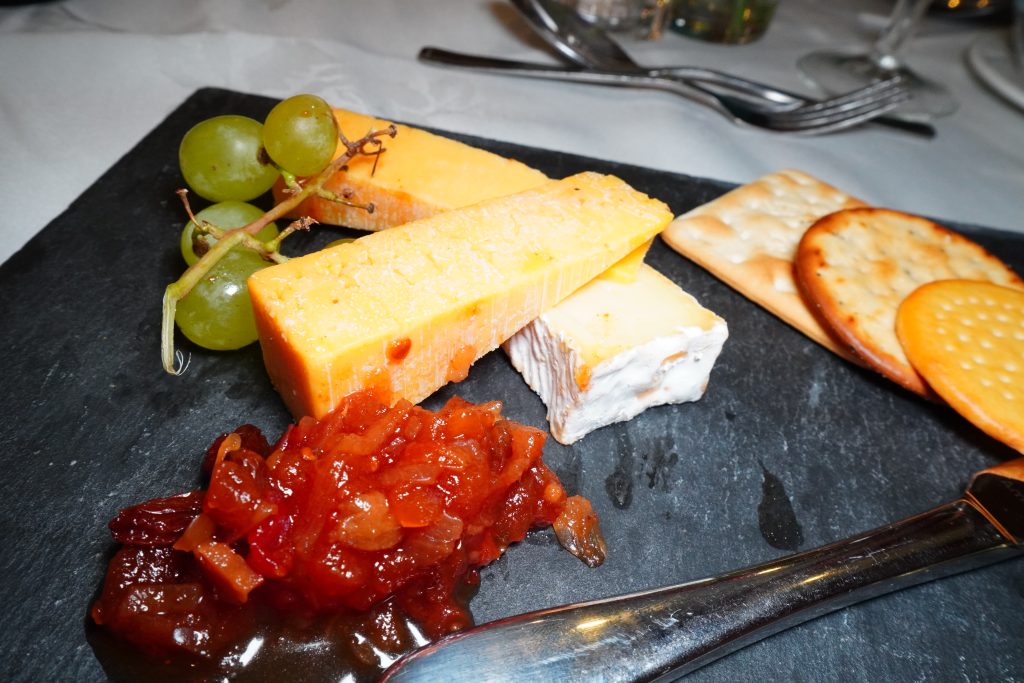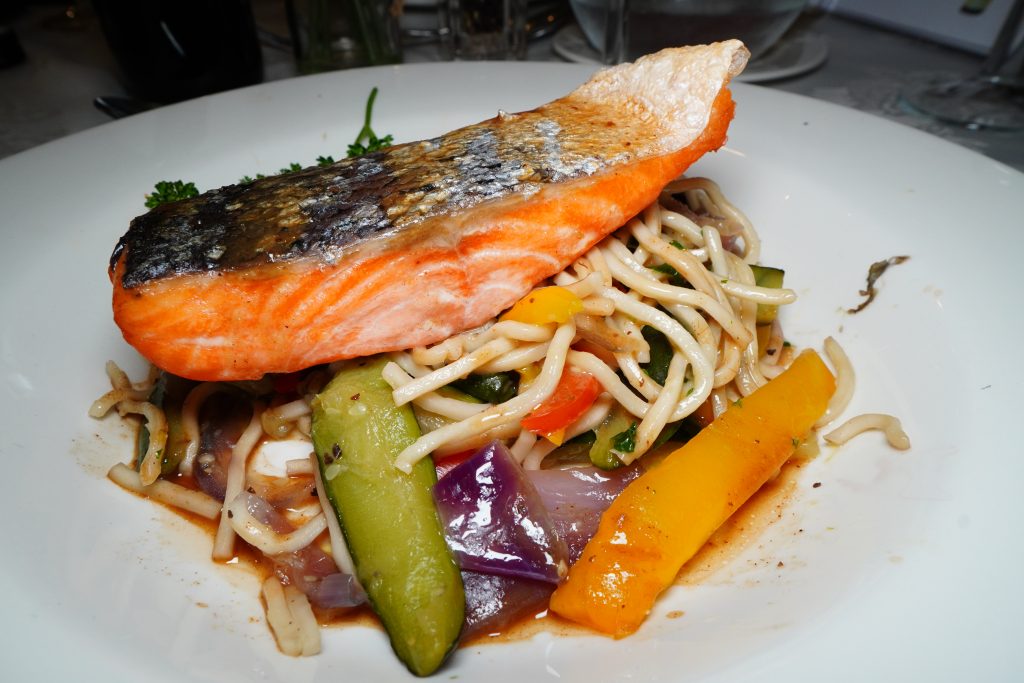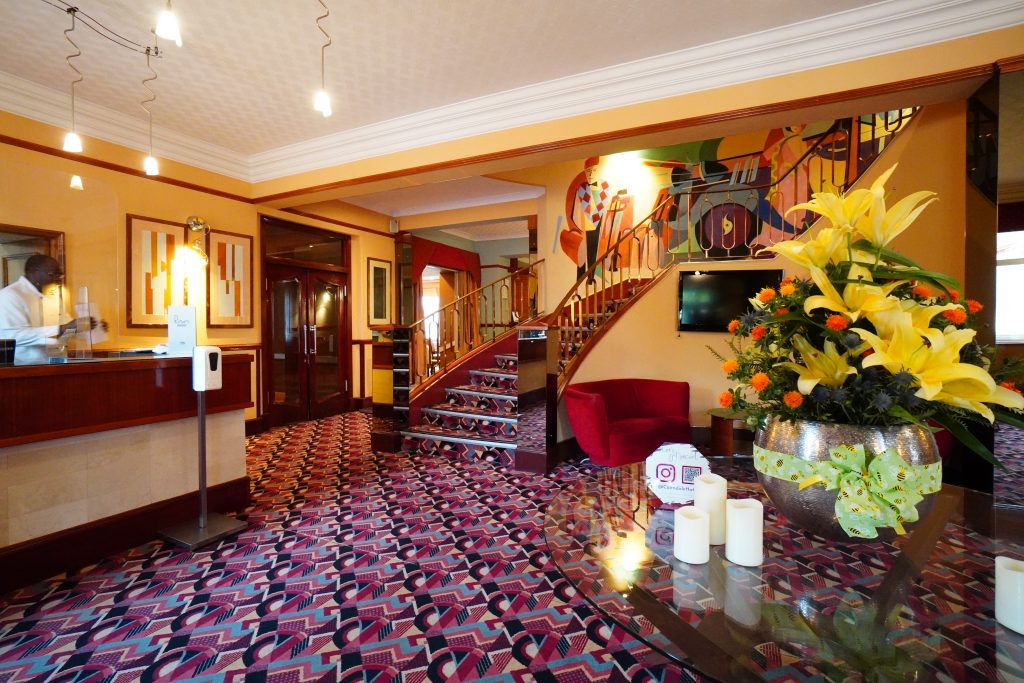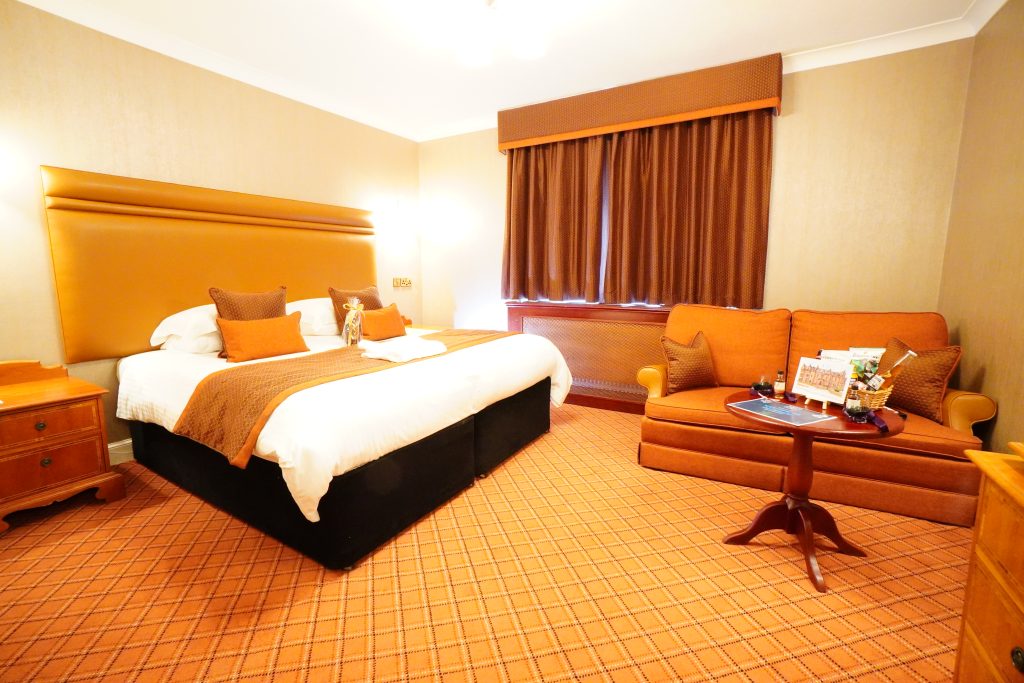Dumfries and Galloway is one of the most convenient areas of Scotland to visit. From England just cross over the border on the M6 and turn left at Gretna.
If you are coming from the North get on the M74 heading towards England and take a right.
It may be close at hand but it is still overflowing with all the ingredients that makes Scotland such an attraction for tourists – wonderful scenery, history and heritage, interesting towns, great food and, of course, whisky. It doesn’t have the mountains of the Highlands but it does have sweeping hills and forests and beaches and bays and bags of heritage, both recent and way back into the past.
After duly turning left at Gretna we took the B721 route to Dumfries rather that the main A75. The smaller road runs closer to the shores and saltmarshes of the Solway Firth that separates Scotland from England and we soon found our first taste of the area’s history and it was a real surprise.
At the village of Eastriggs we stumbled on The Devil’s Porridge Museum. Fascinated as to what fiery recipe for one of Scotland’s national dishes this could commemorate, we were quickly put right with an unexpected story of bravery that helped to win the First World War.
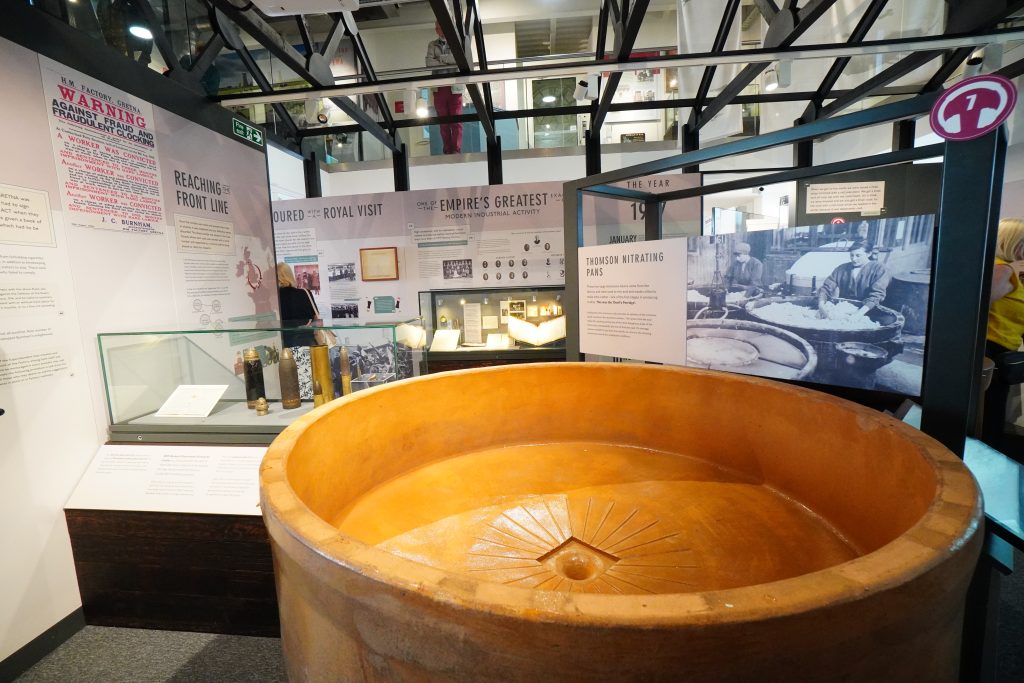
Devil’s Porridge, so named by Sir Arthur Conan Doyle writing of a visit to H.M. Factory Gretna, was a deadly mix of nitroglycerin high explosive and gun cotton which workers, mainly women, mixed and kneaded in giant ceramic pans, dangerous work.
The factory, employing 30,000, had buildings stretching nine miles between Gretna and Eastriggs and was the biggest explosives factory in the world while it was in operation between 1915 and 1919. Its production was vital to Britain’s war effort.
This purpose-built museum not only celebrates those women workers who convinced Sir Arthur Conan Doyle to support votes for women but also covers the Second World War story of the Eastriggs area with another explosives factory at Powfoot, ammunition supply depots and the exploits of the RAF station at Annan.
It also tells the story of the worst rail disaster in British history at Quintinshill on May 15, 1915 when a train full of 500 soldiers of the 7th Royal Scots on their way to fight at Gallipoli crashed. Only 60 survived uninjured.
Touchingly outside the museum is a memorial to animals in war including carrier pigeons, war horses and sniffer dogs as well as innocent animal victims of conflict.
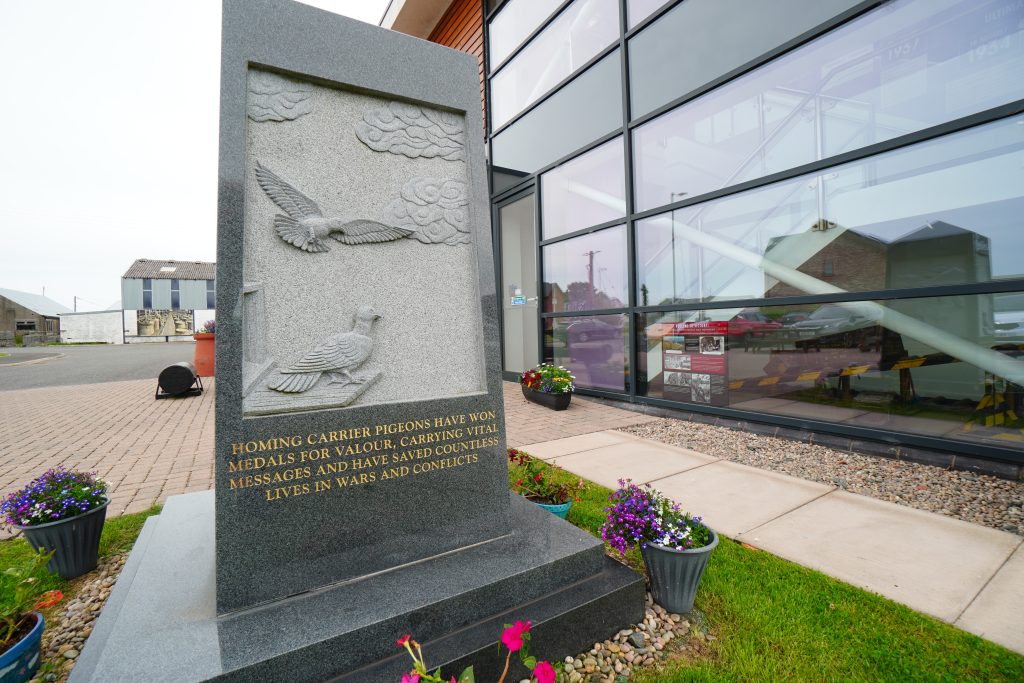
Dumfries itself is an excellent base for a holiday in the area. We stayed at the Cairndale Hotel and Leisure Club right in the centre of the town.
The hotel has an indoor pool and sauna, steam room and jacuzzi and an excellent restaurant. It is also close to the railway station.
We were able to leave our car in the hotel’s large car park and investigate the town on foot.
Scotland’s National Poet Robert Burns lived and farmed in the area and spent the last years of his relatively short life in Dumfries. Just around the corner from the Cairndale you can visit his home as well as his grave.
Down by the River Nith is the Robert Burns Centre reached on a gentle walk along the river promenade.
Next to the house is a public garden awash with flowers with several large murals on the stone walls depicting parts of his life. You will find there is much more to this Scots national hero than Auld Lang Syne and Burns Night haggis.
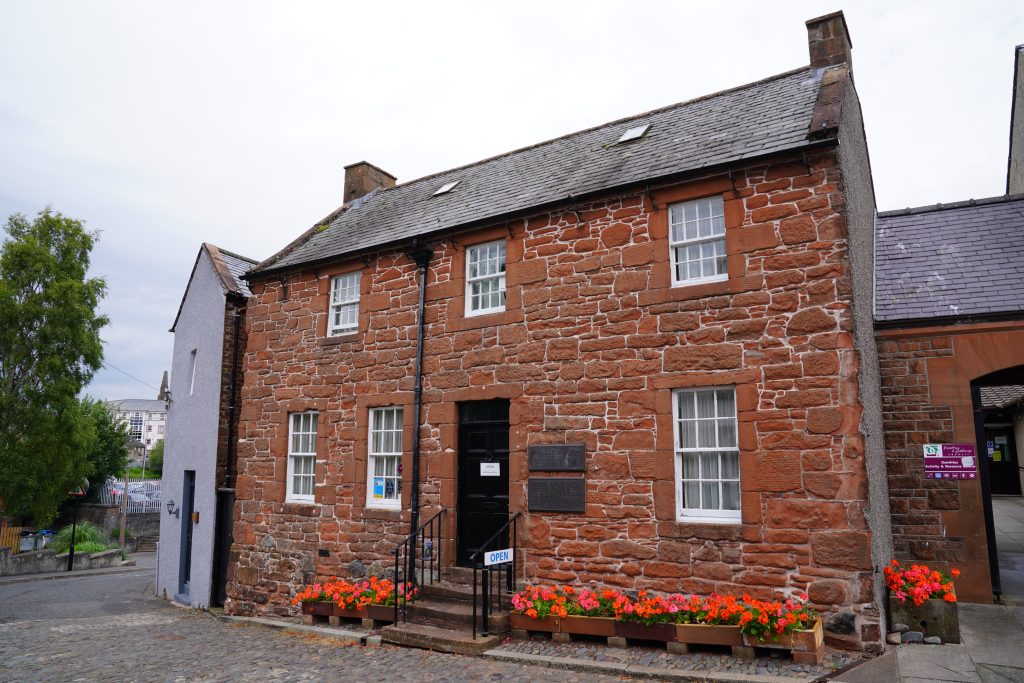
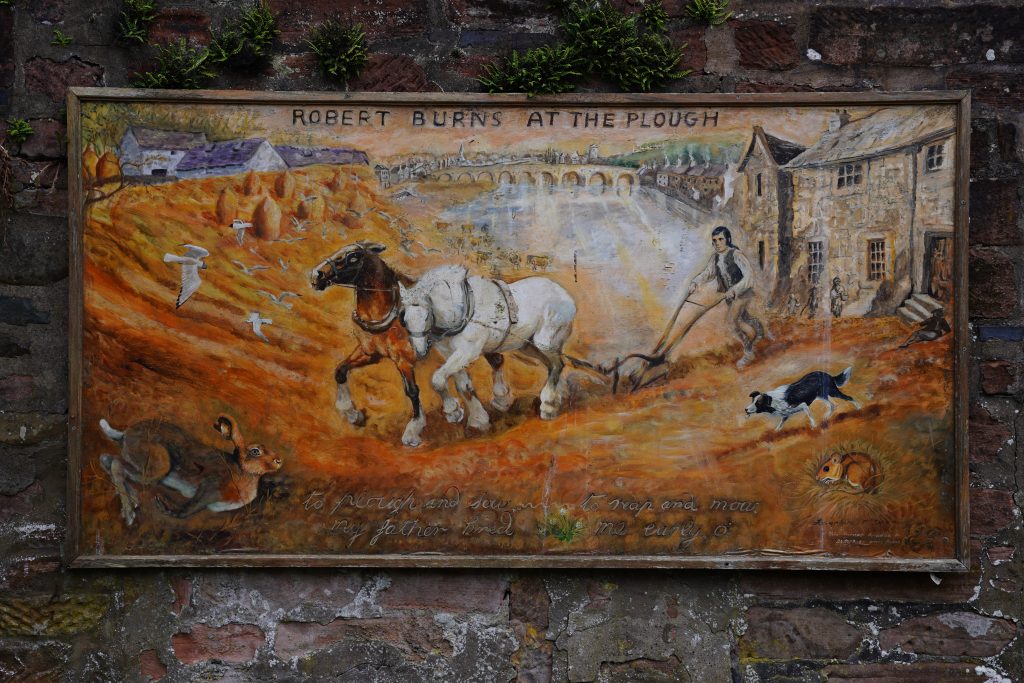
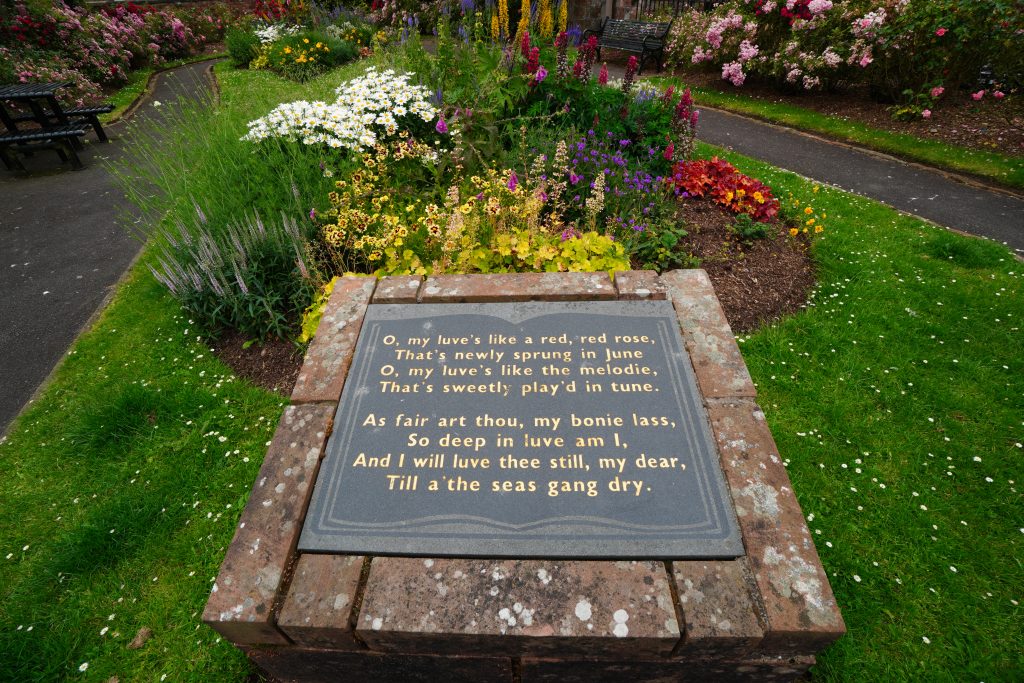
With only a couple of days to explore we decided to stay in the immediate Dumfries area and leave investigating further west to another visit.
The drive across to Castle Douglas and Gatehouse of Fleet on the A75 is through undulating agricultural countryside with some forested areas.
At Castle Douglas we met up with Kelton a 10ft tall, one ton wicker sculpture of a Belted Galloway bull installed in the town park overlooking the cattle market.
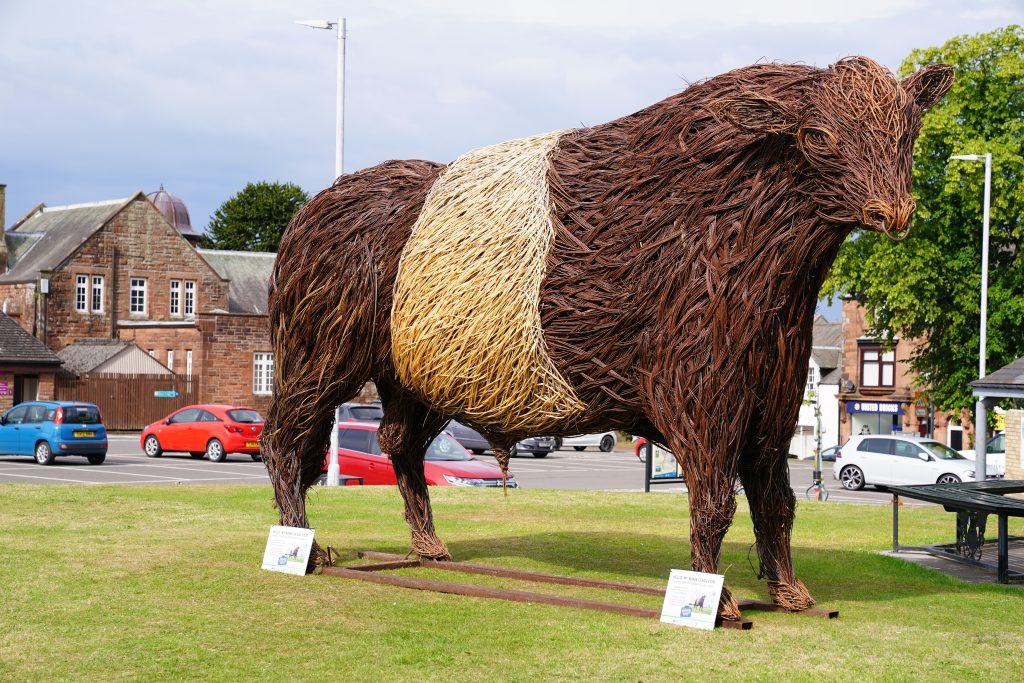
Created by renowned willow artist, Trevor Leat, it starred at The Royal Highland Showground in June 2022 and is now on tour.
Just outside Castle Douglas is the Threave Estate which has one of the finest gardens in the UK. It is a school for heritage gardeners as well as the National Trust for Scotland’s Threave House. The estate has a nature reserve and wetlands area as well as an Osprey Centre where during he spring and summer you can observe breeding ospreys from a platform. You can also see red kites, peregrine falcons and can walk down alongside the River Dee to Threave Castle a ten-storey tall tower dating from 1369 when Archibald “the Grim” built it on an island in the river as a stronghold for the Black Douglases one of the most feared and powerful clans in those times. Take the winding lane through the reserve to the Osprey Centre where you can buy tickets that will ferry you across to the island.
Further west on the A75 is the town of Gatehouse of Fleet with an impressive clock tower at one end of the main street and an unusual historic war memorial which is a copy of a carved stone cross dating from around 800 AD during the reign of Caustantin, King of the Picts.
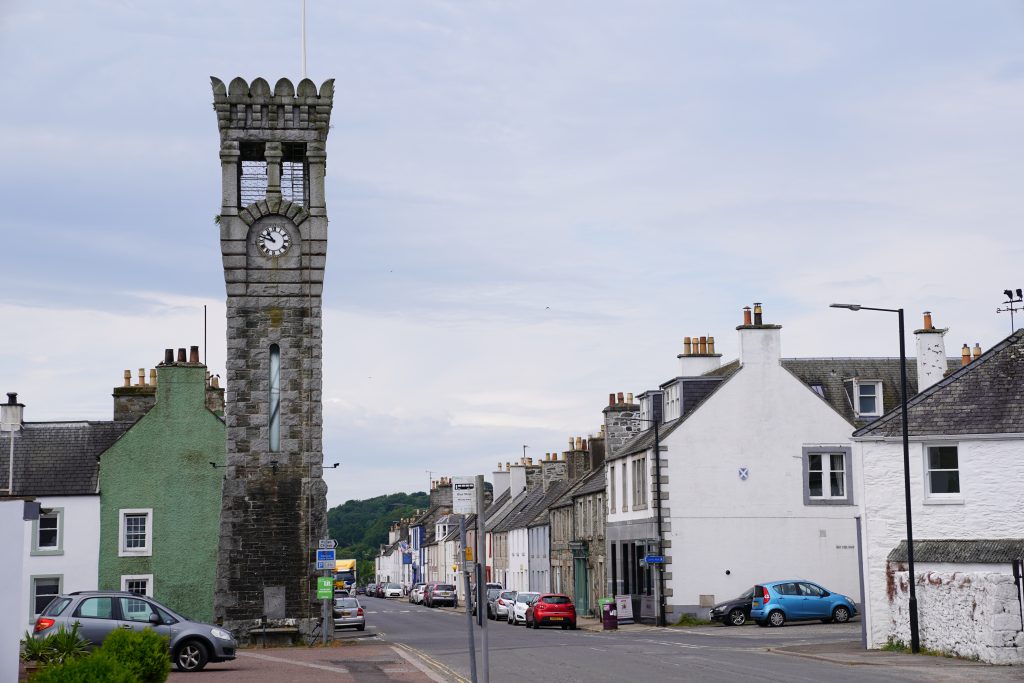
From the town we took a diversion on a single track road to the Fleet Valley viewpoint at Knocktinkle.
Cairnsmore of Fleet dominates the head of the valley and is one of the few Galloway hills to remain unforested from valley to summit.
Castramont Wood, the largest ancient oak wood in the valley, provides spectacular colour throughout the year. In the past it was managed to produce charcoal, but now is renowned for its stunning carpet of bluebells in the Spring.
Our route back to Dumfries was on the A711 along the coast from Kirkcudbright a charming town beloved of artists and sculptors on the mouth of the River Dee with its little shops and galleries and heritage in the form of a castle and fortifications.
Further along the coast road is Sandyhills Bay with a beach and holiday centre with view across the Solway Firth to the mountains of the Lake District.
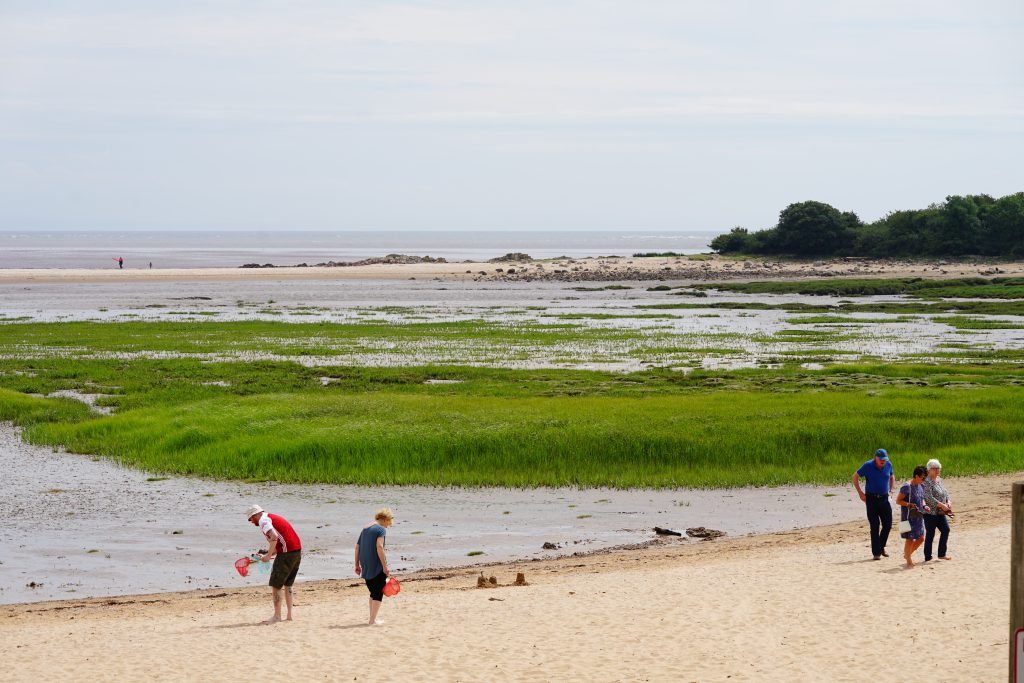
At the village of New Abbey you can visit the remarkable whole ruins of Sweetheart Abbey founded in 1275 by Dervorguilla of Galloway, daughter of Alan, Lord of Galloway, in memory of her husband, John de Balliol. After his death, she kept his embalmed heart, contained in a casket of ivory and silver, with her for the rest of her life, and it was buried alongside her when she died, hence the name of the Abbey Church in its distinctive local red sandstone.
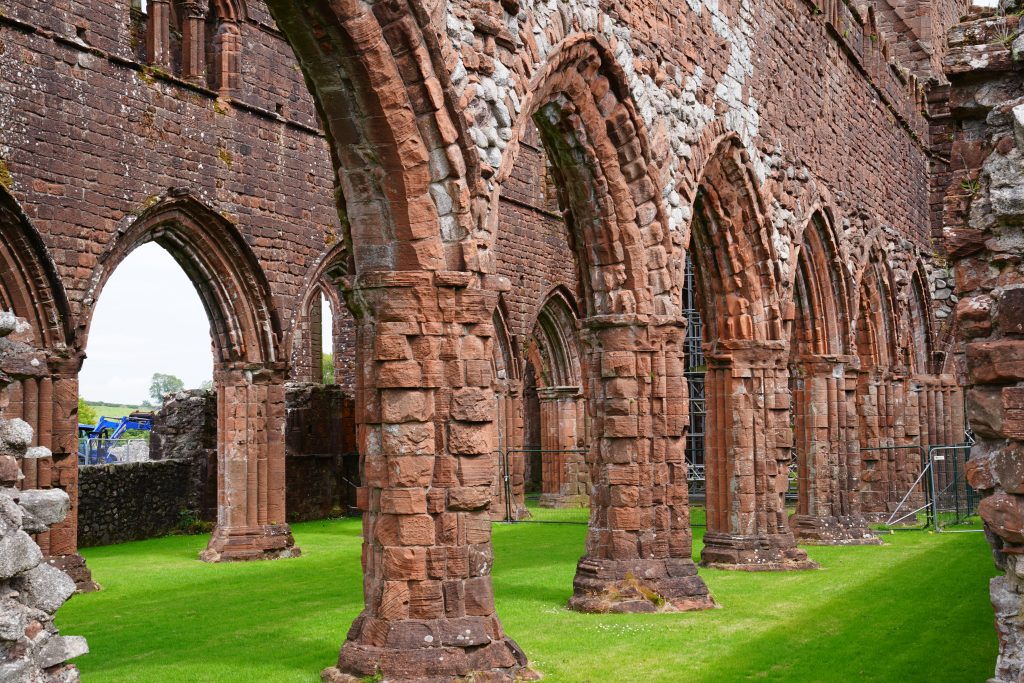
Across the River Nith is the moated Caerlaverock Castle scene of years of wars and sieges in the Middle Ages. It looks the part for the conflict between the English and the Scots. Towered Gatehouse is the apex of a triangular footprint with curtain walls on each side of the triangle, guarded by towers at each corner. The ruins of a former castle are also part of the visit.
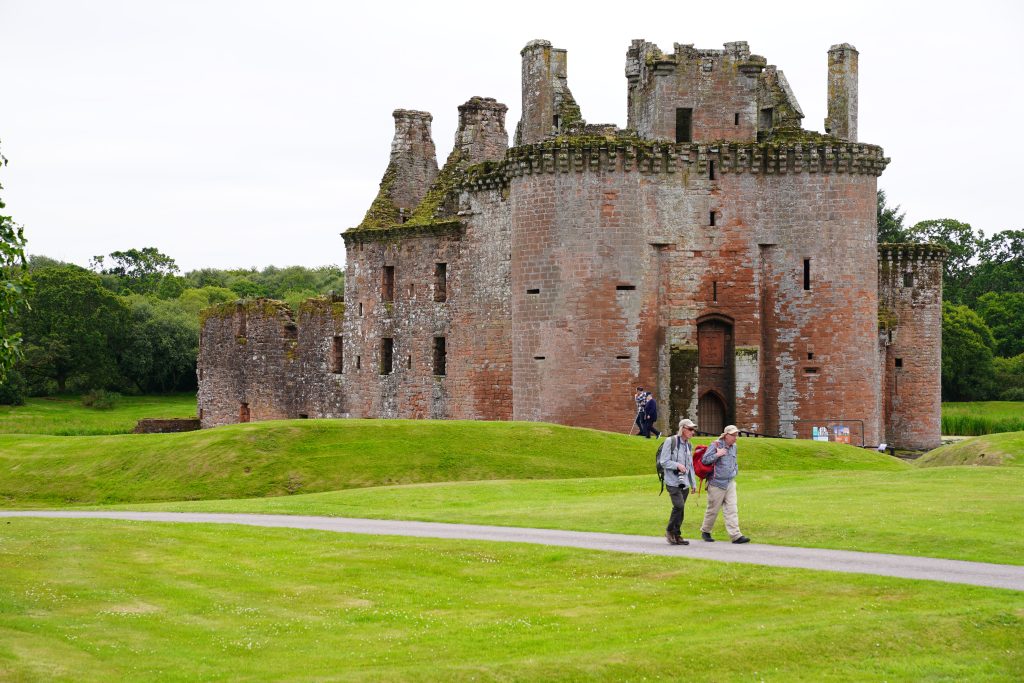
Find out more
Tourist Website: (www.visitscotland.com)
Cairndale Hotel and Leisure Club, English Street Dumfries. Tel: 01387 254111. Website: (www.cairndalehotel.co.uk)

